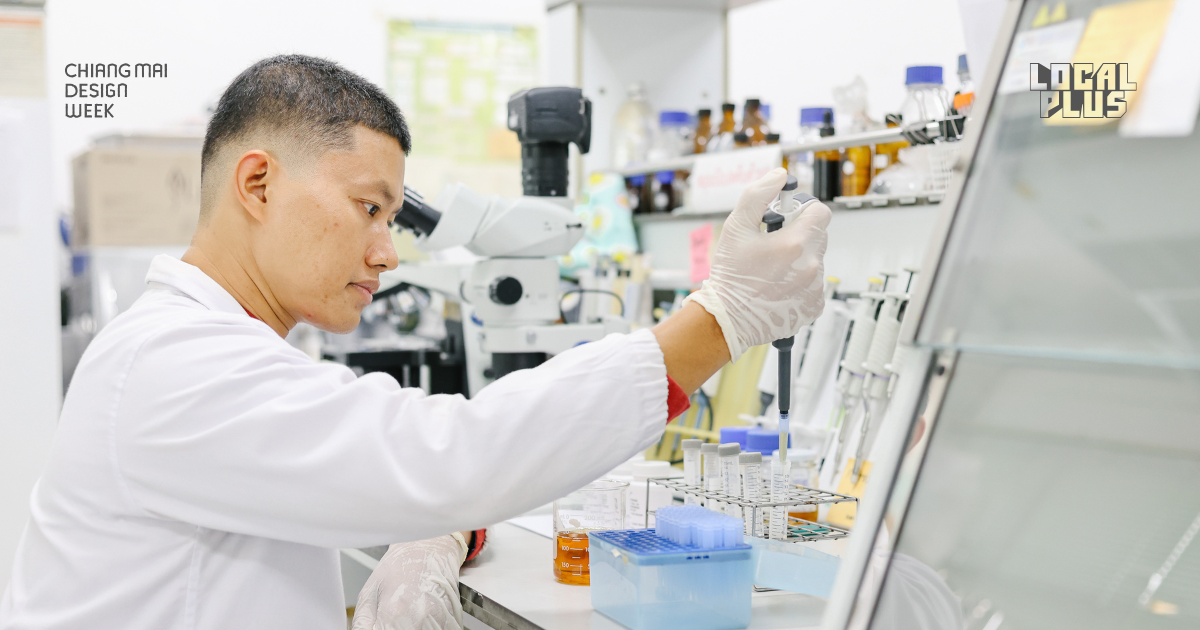Honey Dialogues: Beyond the Sweet Potential of Honey

เผยแพร่เมื่อ 5 months ago
Honey Dialogues: Beyond the Sweet Potential of Honey
“Sweet like honey in the fifth month” is a classic Thai expression that reflects the exceptional flavor of honey harvested at the peak of the season—when bees across the country produce their finest nectar.
Interestingly, despite honey being one of the oldest ingredients in human civilization, and Thailand being home to over 100 of the world’s 20,000 bee species, most Thais are familiar with just one type: longan blossom honey. This particular honey, while undeniably pleasant, dominates Thailand’s food industry, representing a narrow view of what honey can truly offer.

“While honey is always sweet, the character of that sweetness can vary significantly depending on the bee species—even within the same species, differences in forest habitats can create complex flavor profiles,” said Benz Weerawit Inprayong, founder of Bumrungsook Farm. Benz is a young honey enthusiast and one of the very few in Thailand who collects and catalogs more than 130 varieties of honey.
We met Benz at Peoples, Bees, and Forests, an exhibition held during Chiang Mai Design Week 2024, where he introduced visitors to the incredible diversity of Thai wild honey. Guests were invited to sample up to ten distinct flavor notes—each sourced from different forest hives around the country.
“Several factors influence honey’s flavor. First is the species of bee. In Thailand, we commonly distinguish between two major groups: true honey bees (such as Apis dorsata, Apis cerana, Apis florea) and stingless bees from the Meliponini tribe, known locally as channrong, of which we’ve identified at least 35 species,” Benz explained.
“Some stingless bee honeys—like those from channrong khon-ngoen or thuai dam—taste quite similar to conventional honey. Others—like ung-mee or i-tama—are more acidic, almost citrusy. Still others, such as channrong din, have strong medicinal notes due to their habitat in underground nests and their diverse diets,” he added.

Benz likens wild honey collecting and curating to winemaking. Through Bumrungsook Farm, he aims to make high-quality, varietal honeys accessible to more people—not just as a business pursuit, but as a social passion. To him, the diversity and vitality of bees directly reflect the health of Thailand’s ecosystems. The broader the public’s access to different kinds of honey, the more robust and resilient our forests likely are.
According to World Integrated Trade Solution (WITS), Thailand exported over 880 million baht worth of honey in 2024, ranking second in ASEAN (after Vietnam) and 23rd globally—the vast majority of which is still longan honey.
While Benz champions the biodiversity of Thai wild honey, Asst. Prof. Dr. Terd Disayathanoowat, a biologist at Chiang Mai University and co-curator of the Peoples, Bees, and Forests exhibition, focuses on developing the domestic honey industry—especially through exploring the untapped potential of stingless bees.

This effort has led to SMART BEE SDGs, a research project dedicated to promoting sustainable beekeeping and value-added products from bees. “Many Thai farmers are now turning to stingless bee farming,” Dr. Terd said. “These bees are gentle, their honey has exceptional nutritional and medicinal properties, and we’ve seen growing interest from younger generations. That’s a promising sign for the future.”
Beyond honey production, Dr. Terd’s research explores ways to convert bee byproducts into new goods, such as silk protein-based cosmetics. The aim is to help farmers diversify their income through innovation, knowledge transfer, and consistent support.
“One ongoing challenge is how to meet organic certification standards for Thai honey in high-value export markets. The definition of ‘organic’ is strict and requires further study,” he added.


Dr.Terd also emphasized the importance of empowering local collectors and producers. Through workshops, community outreach, and free honey quality testing services offered via SMART BEE SDGs, farmers are able to command higher prices and enter new markets with greater confidence—thanks to tangible data and government or private-sector support.
Much like Benz, Dr. Terd believes that honey offers more than sweetness or economic gain—it reflects environmental well-being.
“If bees disappear due to human activity—chemical use, monoculture farming—pollination declines, plant reproduction falters, fruits and vegetables diminish, and animals depending on those plants suffer too. Eventually, it loops back to us, the top of the food chain,” he warned.
“When ecosystems collapse, so do civilizations. But if we can do small things—plant more flowers, keep water sources moist, avoid harming bees when we see them—we might just help bees keep visiting, pollinating, and sustaining life.”
Whether through Benz’s mission to elevate the sensory potential of wild honey, or Dr. Terd’s push for innovation in the beekeeping industry, the diversity of bees has deeper implications for our collective quality of life than we often realize.

Exhibition Info
Peoples, Bees, and Forests was held from 7–15 December 2024 at TCDC Chiang Mai as part of Chiang Mai Design Week 2024.

